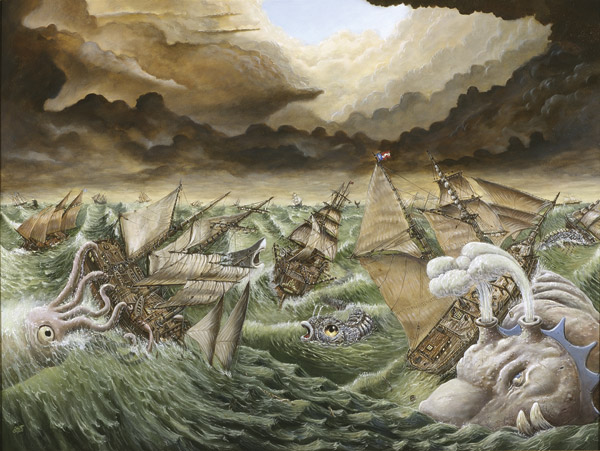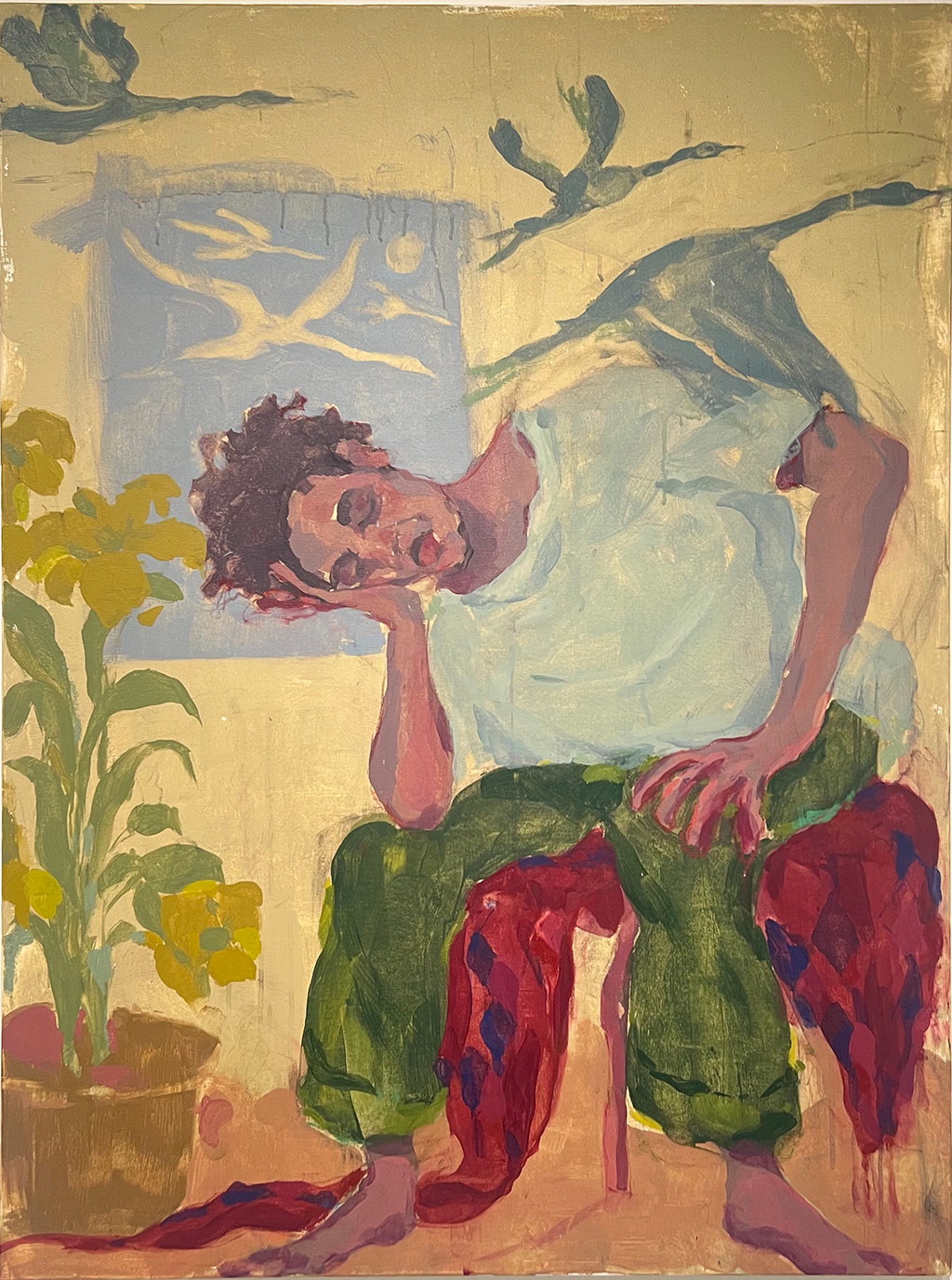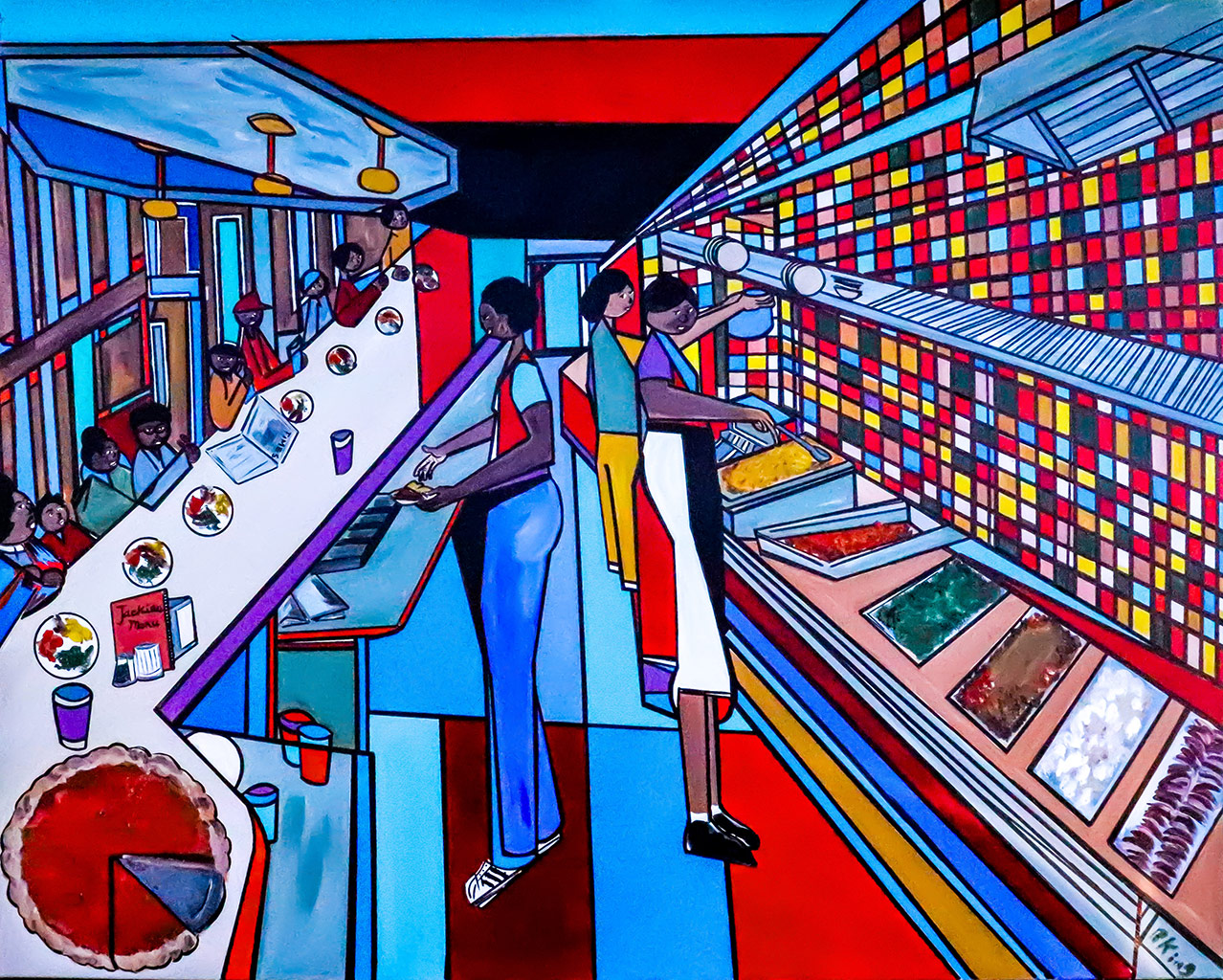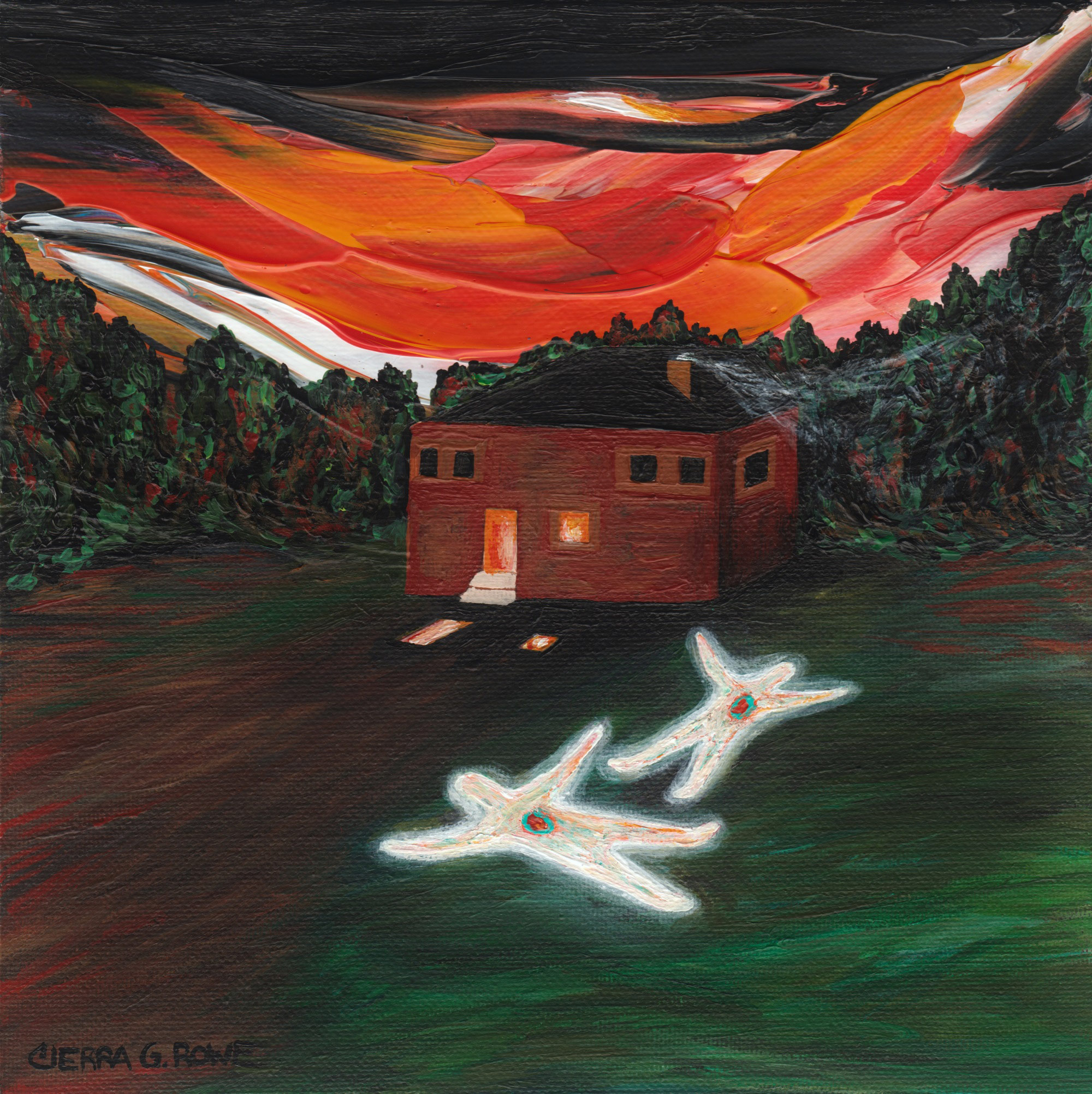
How much of an impact do you think going to the Joe Kubert School of Cartoon and Graphic Art made on you?
I think going there had a big impact on the way I paint and my work ethic. The heavy emphasis on cartooning and illustration combined with nearly impossible-to-meet deadlines is largely responsible for my loose, cartoonish style.
What is your favorite aspect about the seas and bodies of water?
[The sea] is an entirely different world, mostly dark and teeming with monsters. It seems impossible if you really think about it, but it’s there. It’s full of gigantic creatures, and we can visit it.
Do you ever paint landscapes, or do you primarily only paint seascapes?
I primarily paint weird looking people and events. A lot of them are set against a seascape or waterfront, but I mix it up. My last series of pictures were set in Florida.
What tools and mediums do you use?
I paint mostly on canvas or linen. I apply the drawing with a kind of chalk and paint it in with oil paint. I used to use acrylic and still occasionally do.
Do you make a living off of your art?
Yes, for about seven or eight years. I had numerous day-jobs before I started painting full time.
What was the first art piece you remember getting positive attention for?
When I was eleven, I had a comic strip in the local paper. Looking back on it, I can see that it sucked, but people told me it was funny.

Your work is extremely character-based. Where do you get the ideas for your characters? How do you decide what settings to put them in?
I usually think of what ever story or situation I want to portray first. Then I decide what type of person would fit or even better, not fit in that situation. I like the square peg in a round hole scenario.
What influences your artwork?
Almost everything. I think that part of an artist’s natural function is to reflect the world around them. I am always looking around me for things to paint, and I try to imbibe my work with my own experiences. I try not to get too influenced by other artists, but sometimes part of making successful art is building on the work of others. Artists who have influenced my work include: Walt Disney, Peter Bagge, Robert Williams, Todd Schorr, H. P. Lovecraft, and various Italian and Dutch masters. How does that saying go? “We can see so far because we stand on the shoulders of giants.”
Your newer work is a very different style from your previous work. What do you think has changed?
As I change and get older, I guess my painting does too. Everything is always changing, so it makes sense that a person’s style of doing anything will too… it’s unhealthy not to change.

Was changing a conscious decision?
Not so much with what is currently on my website or published elsewhere — that happened organically. However, I am currently working on some stuff that is very much a product of the conscious decision to change styles. I will, most likely, always be making this cartoonish stuff, but my new work has a more real, yet psychedelic, look to it. It’s a refreshing change for me that I am very excited about.
It seems like a lot of your paintings come with stories. Where do you get these facts, and do you actively have an image in your head when you read these stories? Or do the images come when you sit down and think about them?
I like to read non-fictional history; truth really is stranger than fiction. That’s not to say I don’t enjoy a good story, but I find a lot of my subjects in history books. I do sometimes embellish, stretch and manipulate facts. The fun part is figuring out what is real and what is not. Often, people are surprised to learn which of my subjects really existed. I like the weight a painting can carry, people will sometimes believe the impossible if it’s presented in a painting in a matter of fact way. I usually illustrate in my head as I read, but I decide how the painting will go later on.
You have been in a lot of magazines. Do you think most of your work has gotten known because of press, or more because of shows and word of mouth?
Definitely a combination of all those things. It’s important for an artist to use whatever tools are available to let the world know they are out there.
What is one piece of advice you would give to other artists who are trying to get their work out there?
Stay out of my way, junior.
The featured image above, “Seeds of Image” (oil on canvas, 2005), is based off of this story, as told in Skot Olsen’s words: “In January of 1878, La Providencia, a Spanish ship bound for Barcelona from Havana, wrecked off the coast of what would become Palm Beach. This ship was carrying 20,000 coconuts that washed up along the coastline. Some of the local residents collected and planted many of the coconuts, which were not native to South Florida, but soon became a symbol of the region. The name Palm Beach, as well as most of the coconut palms in South Florida, are the result of that wreck.”






